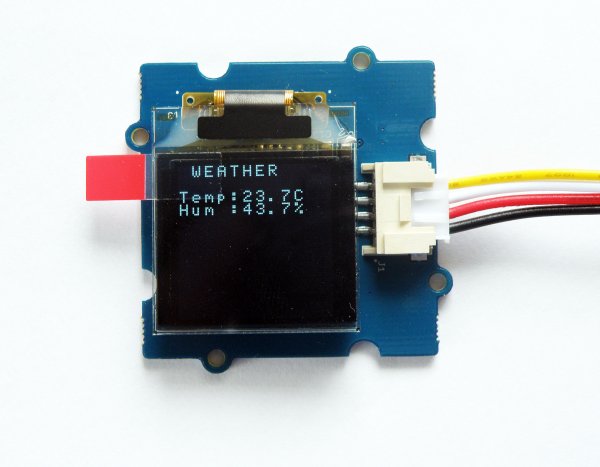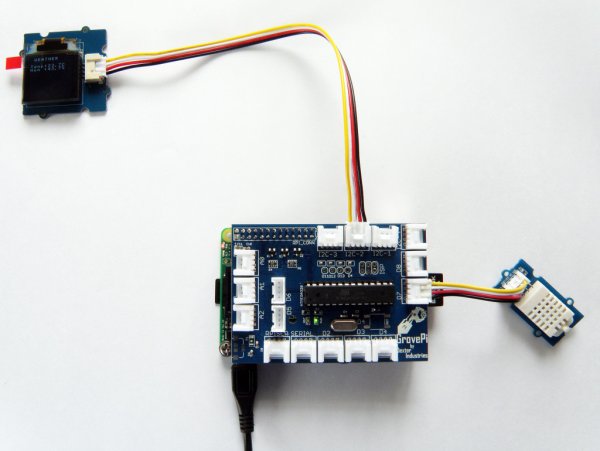In this project, we use a Grove DHT (Digital Humidity and Temperature) sensor as a Raspberry Pi temperature sensor. This project uses a Grove OLED display, connected to the Raspberry Pi, to show the temperature and humidity. You can use this project as designed: a simple weather station for your home.

This is a simple example to demonstrate how to use multiple Grove Sensors with GrovePi in your Projects. All the parts used in this project are available in the GrovePi Starter Kit.
Hardware Required
- Raspberry Pi
- GrovePi
- Grove DHT sensor
- Grove 96×96 OLED
- Grove Connection wires
Connecting the Raspberry Pi temperature sensor
Connect the DHT sensor to Port 7 and the OLED display to any of the I2C ports. Now power on the Raspberry Pi.

In the Raspberry Pi terminal, change directory to GrovePi/Projects/home_temp_humi_display:
cd /GrovePi/Projects/home_temp_humi_display
In the directory, Run the home_temp_hum_display.py in example python program in root (sudo):
sudo python home_temp_hum_display.py
The OLED display will start showing the live temperature data and humidity data from the DHT sensor.
For more detail: Home Weather Display

